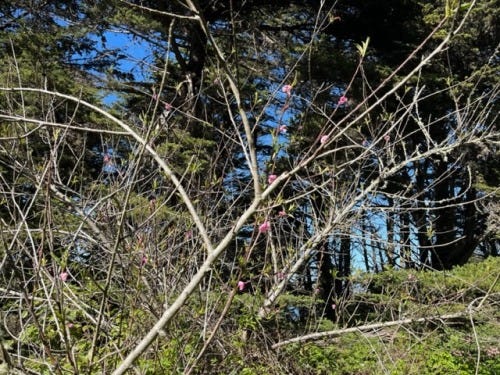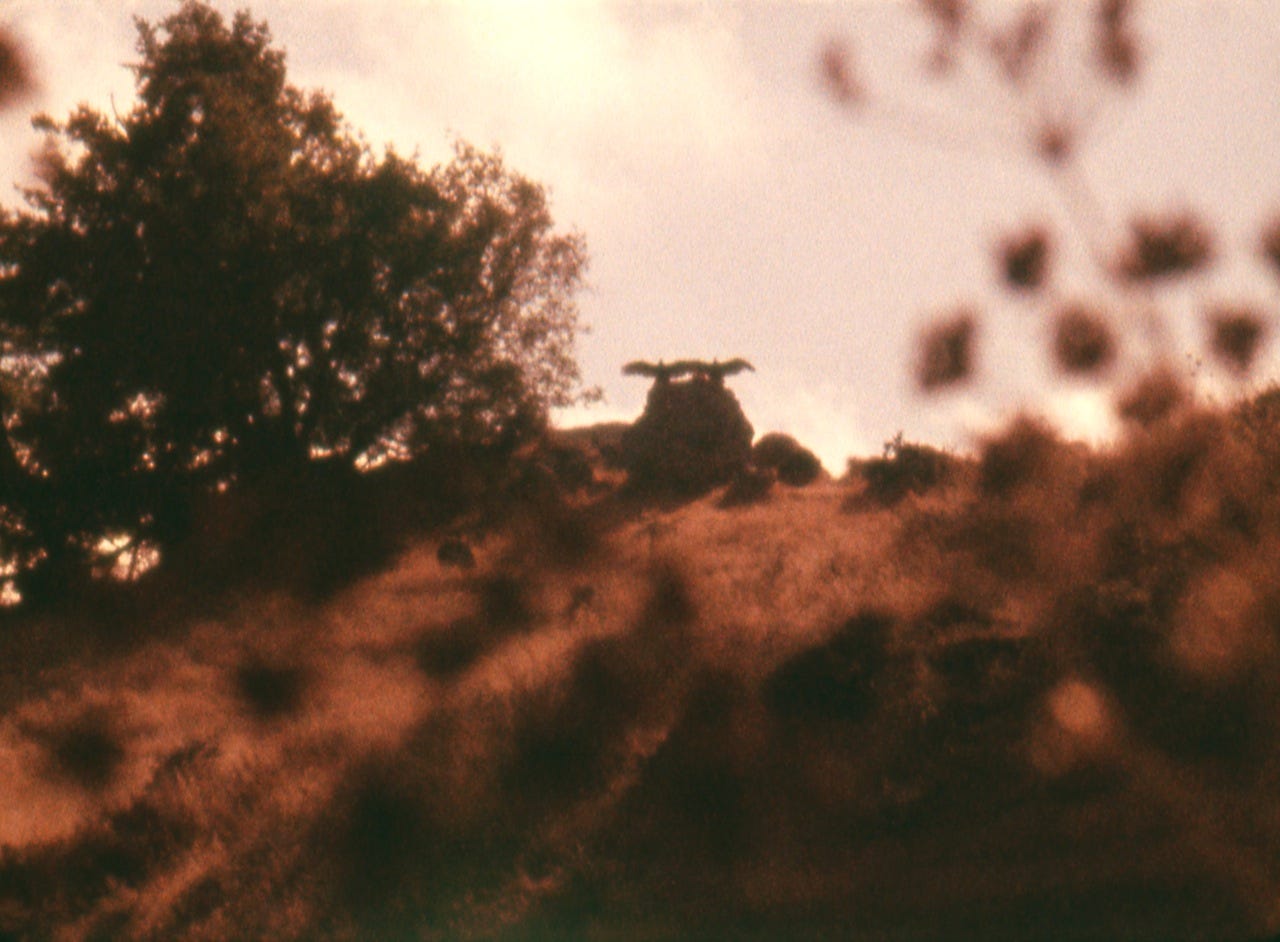Notes on Films by Nathaniel Dorsky and Jerome Hiler (1964-2023) - 4/5
Program 4:
Brakhagian influence is one of the overarching themes from this program. Brakhage was a major influence on Dorsky and Hiler, and in a way, his painterly filmmaking is a parallel to polyvalent cinema. The opener was Maïa Cybelle Carpenter’s Sans Titre, a short Brakhage-like film.
Ariel (Nathaniel Dorsky, 1983):
For lack of a better word (and one I’m reluctant to use because of my relative unfamiliarity with the work), it’s Brakhagian. Hand-painted and hand-scratched film. Beautiful colors, I vividly remember the edges of the film strip, and blotches of white striking down almost like lightning down the right side of the frame. Dorsky apparently doesn’t love this film, and is going to take the print from this series out of circulation, but I thought it was lovely. More like seeing a painting than watching film. Dorsky and Hiler’s work has such a unique interdisciplinary quality.
Caracole (for Cecilia) (Nathaniel Dorsky, 2019):
A short portrait for Cecilia, the daughter of a former Canyon Cinema head. Liked it a lot. Late Dorsky shots of nature, with racking focus and adjustment of exposure. Memorable shots of Cecilia’s clothing, including a closeup that zooms in on a wool or felt sleeve. An actual portrait of Cecilia eventually emerges, and we see her in an apartment holding a baby. Ends with another shot of trees. Another film of yellows and greens.
Triste (Nathaniel Dorsky, 1996):
Dorsky’s purported first successful polyvalent film. Opens and closes with Brakhagian hand-painted sequences. A very gray film, but that might be due to one of the most memorable shots being of a shoe floating in some gray water. A middle ground between the home videos quality of Hours for Jerome and the more patient, abstract rhythms of Song and Solitude. I was especially taken by the editing here, as cuts are mostly employed for visual effect. A cut from an orange frame to a purple frame. A cut from leftward motion to rightward motion. Birds scattering into a blue sky. Horses. Textural cuts from telephone poles to a hose. The ocean rushing in on a black and white frame. And of course, Jerome, visibly older. So moving.
New Shores (Jerome Hiler, 2012):
A companion piece to In the Stone House, made mostly of footage from San Francisco. A strong contender for my favorite film from the weekend, marrying Hiler’s beautiful superimpositions with the most intimate footage of their shared lives. Dorsky in the shower in an off-color frame. Dorsky and Hiler enjoying a canoe ride together. We see Dorsky in the back, smiling. We the back of Hiler, rowing in a striped shirt. The most romantic and most homosexual of the films. A sequence at a pride parade where we see Dorsky holding a banner has the pride flag superimposed. A possible misstep that I actually enjoyed was a shot of two vultures spreading their wings. In context, the connection to Hiler and Dorsky might seem atypically sentimental, but I found it moving.
So personable. The halloween party from Hours for Jerome returns in a whimsical moment with the scary mask figures dancing on the frame over the San Francisco house. A huge jack-o-lantern is also superimposed in there. A tender sequence observes elderly residents of San Francisco sitting on benches. One of them theatrically flicks his cigarette onto the sidewalk.
Brakhage-adjacent moment is a stretch of russet red frames filled with scratches. I actually couldn’t tell if this was hand-painted directly on the film or if this was an actual wall.
Some of the most beautiful images I’ve ever seen. Like Words of Mercury, Hiler plays with light in ingenious ways. I thought I could hear the entire audience let out a silent gasp at a shot of a bush of white flowers superimposed with glowing orbs of blue, purple, and pink lights. He shoots a body of water, underexposing the image such that all we see are the glistening, swaying ridges of the current. Water is clearly important. A color sequence follows the outline of a cliff (echoes of the train sequence that opens Bagatelle II), peering out into the ocean below. There are recurring sequences at the beach, as a man walks and skips rocks. An out of focus shot of some trees and water periodically changes from orange to blue, the phasing in and out of the colors separated into horizontal thirds. Water has never looked as good on film. The saturated warmth of the film grain looks unreal. It’s alien. All of the imagery is connected to personal, physical remnants of memory. Miraculous.







